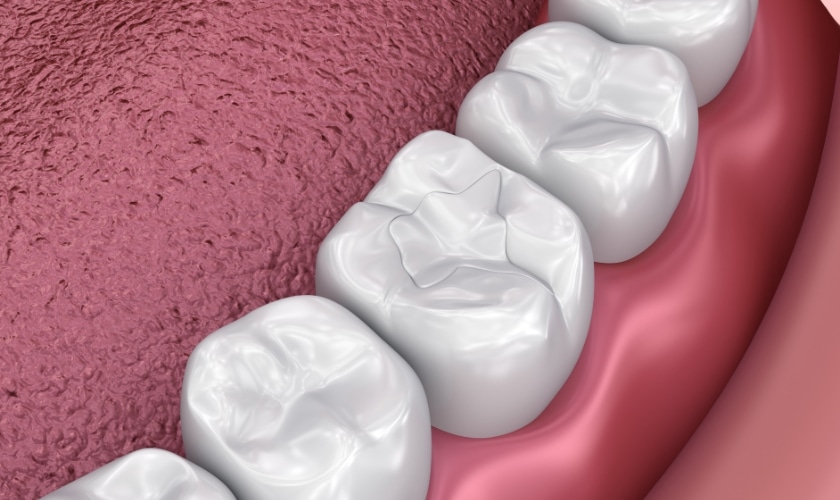What Is Dental Sealant And How Does It Prevent Cavities?
By :
Affordable Dentist | November 22, 2023
The battle against cavities is an ongoing struggle. Despite our best efforts with regular brushing and flossing, some areas of our teeth are more prone to decay than others. This is where dental sealants emerge as unsung heroes, offering a robust defense against the relentless attacks of cavity-causing bacteria. In this exploration, we will delve into the world of dental sealants in Waco, TX, uncovering their significance, application, and the role they play in preventing cavities. Additionally, we will touch upon the importance of regular dental care and why considering the expertise of an emergency dentist might be a smart move. Let's embark on this journey to understand how a thin layer of protection can make a monumental difference in your oral well-being.
What Are Dental Sealants?
Dental sealants are thin, protective coatings applied to the chewing surfaces of molars and premolars. These back teeth, also known as the 'permanent teeth,' are especially vulnerable to cavities due to their uneven surfaces and the presence of deep pits and fissures. Sealants act as a barrier, preventing bacteria and food particles from settling into these hard-to-reach areas and causing decay.
How Are Sealants Applied?
- Cleaning the Teeth: Before the sealant application begins, the dentist initiates the process by thoroughly cleaning the teeth that will receive the sealant. This cleaning ensures the removal of any plaque, debris, or surface contaminants, allowing for optimal adhesion of the sealant to the tooth enamel.
- Etching the Teeth: Once the teeth are clean, the next step involves etching the tooth surface. The dentist applies a gentle acid solution to the teeth, creating a slightly roughened texture. This etching process is crucial as it enhances the bond between the tooth enamel and the sealant.
- Applying the Sealant: With the tooth now appropriately prepared, the liquid sealant is meticulously painted onto the chewing surfaces of the molars or premolars. The sealant material is typically a resin-based or glass ionomer substance that flows easily into the deep pits and fissures of the teeth.
- Curing the Sealant: To solidify and bond the sealant to the tooth enamel, a special curing light is used. This light activates the chemicals in the sealant material, causing it to harden quickly. The curing process is relatively fast, and patients often experience no discomfort during this phase.
- Evaluation and Fine-Tuning: After the sealant has hardened, the dentist evaluates the application to ensure complete coverage and a secure bond. In some cases, additional adjustments may be made to perfect the sealant's placement. The goal is to create a seamless barrier that effectively shields the tooth from bacteria and food particles.
When Should Sealants Be Applied?
The timing of sealant application is crucial for maximizing their preventive benefits. As mentioned earlier, the ideal period is shortly after the eruption of permanent molars and premolars. Applying sealants to newly erupted teeth offers immediate protection during critical early development, creating a lasting barrier against tooth decay on chewing surfaces. Paired with regular check-ups and good oral hygiene, sealants are key to promoting a lifetime of healthy smiles.
How Do Dental Sealants Prevent Cavities?
Dental sealants serve as invisible guardians, standing between your teeth and the relentless onslaught of cavity-causing bacteria. Here are the remarkable ways by which dental sealants prevent cavities:
Sealing Off Vulnerable Areas
The chewing surfaces of molars and premolars are not smooth; they are adorned with deep pits and fissures. While these anatomical features aid in the chewing process, they also create havens for bacteria and food particles. Dental sealants work by filling in these crevices, creating a smooth and even surface that is far less hospitable to microbial invaders.
Blocking Bacterial Invasion
Bacteria in the mouth, particularly Streptococcus mutans, are notorious for their role in cavity formation. These bacteria thrive on the remnants of food particles left on teeth after meals. Dental sealants in Waco, TX, act as a formidable barrier, preventing bacteria from settling into the pits and fissures of teeth. By denying bacteria a foothold, sealants significantly reduce the risk of acid production and subsequent decay.
Creating a Smooth Surface for Easy Cleaning
The smooth surface created by dental sealants not only hinders bacterial colonization but also maintains oral hygiene. Unlike the uneven surfaces of untreated teeth, sealed teeth are more accessible for toothbrush bristles and floss. This facilitates more effective cleaning, ensuring that any lingering food particles are swiftly removed before bacteria can convert them into cavity-causing acids.
Long-Term Protection
Dental sealants are not a short-term fix; they offer long-term protection. Once applied, sealants can withstand the rigors of daily chewing and oral hygiene practices for several years. This sustained barrier is particularly crucial during the formative years of permanent molars and premolars when teeth are most susceptible to cavities.
In the quest for a cavity-free smile, dental sealants emerge as a powerful ally. Their ability to create an invisible shield against cavities makes them a valuable addition to any oral health strategy. From children entering the age of permanent teeth to adults aiming to fortify their smiles, the benefits of dental sealants are undeniable. However, let's remember that they are just one piece of the puzzle. Regular dental care, including check-ups and cleanings, plays a crucial role in maintaining overall oral health.


